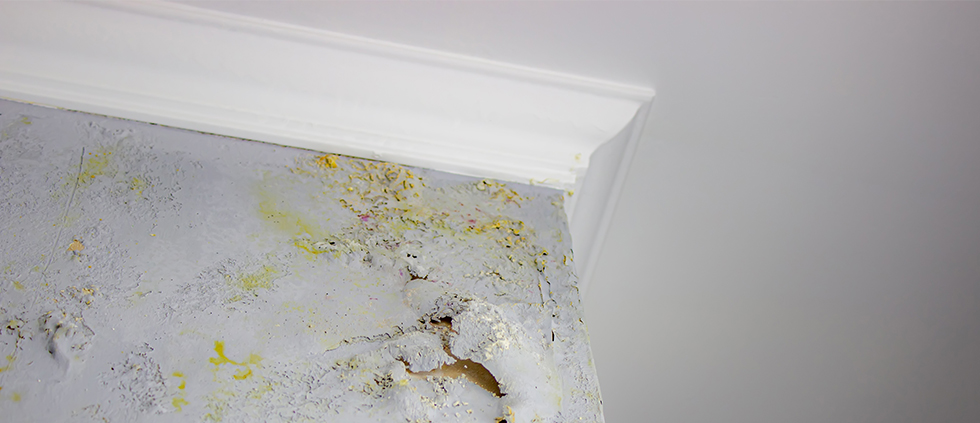A holistic approach is required to the housing crisis extending compassion and respect to the most vulnerable of society
Kwajo Tweneboa is becoming a familiar face on our tv screens imploring MPs to make a change to the lives of many vulnerable members of our society who continue to live in some of the most shocking standards of accommodation that most would have thought would not have a place in modern Britain.
Legislation does exist that should protect the rights of tenants but why does it remain such an issue for both social housing tenants and private tenants alike? And why is a young dynamic gentleman having more success in being heard using his social media following than some of the countries most vulnerable , elderly and disadvantaged people who either do not have the resilience or support to fight to be heard.
An inequality of power between the tenant and the landlord remains particularly when it comes to a breach of repairing obligations.
Tenants can report issues directly to the landlord but if that is not effective they then turn to a three stage complaints process when dealing with social housing providers, notify the housing ombudsman, environmental health local councillors and MPs before finally resorting to litigation .
This is a huge amount of administration for tenants and becomes a daily focus and can have a hugely damaging effect on an individual’s resilience. It is demoralising and being repeatedly dismissed and often ridiculed.
October 2021 the Housing Ombudsman produced a report entitled “spotlight on damp and mould” “it’s not a lifestyle”.
Within the report it was acknowledged that there is often a direct correlation between conditions of damp and mould and health and well-being of residents.
In my own work as a Housing Lawyer a significant proportion of my clients’ present successful standalone personal injury claims in addition to the initial housing disrepair claim such is the detrimental effect their experience has had on both their mental and physical health.
My clients often have complex health needs that are further exacerbated by mould and damp and a zero-tolerance policy should be applied by social housing providers and landlords alike when it comes to such living conditions.
In rare occasions life style can contribute to the problem but a proactive approach in terms of both education and installation of mechanical ventilation can make a huge difference to the comfort of the residents.
No tenant would choose to live in substandard accommodation and should not feel to blame or disregarded.
All too often people’s pleas for help are being dismissed unfairly as a “life style” issue or condensation.
But condensation itself is a symptom of a problem and should not be seen as a justifiable defence without proper investigation.
Mould can also be incredibly dangerous for those with a weakened immune system, babies, young children and the elderly.
The symptoms of mould allergy are very similar to the symptoms of other allergies, such as sneezing, itching, runny nose, congestion and dry, scaling skin.
Mould and damp are caused by a build-up of excess of moisture in the air. This can arise from a number of issues; leaking pipes, rising damp in basements or ground floors, or rain seeping in because of exterior damage to the roof or around the sealant window frames.
We all deserve warm comfortable housing and it should be a basic human right in a first world country.
A proactive rather than a reactionary approach would save thousands of pounds of ombudsman fines and compensation claims
Whilst the Ombudsman does lack enforcement powers generally speaking they are able to resolve disputes involving tenants and leaseholders and their voluntary members making recommendations to the landlord to take steps to improve living conditions.
Within the Housing Ombudsman report entitled “spotlight on damp and mould” “it’s not a lifestyle”.
There were 26 recommendations made which would hugely improve the quality of lives of thousands of residents :
1. Landlords should adopt a zero-tolerance approach to damp and mould
interventions. Landlords should review their current strategy and consider whether their approach will achieve this.
2. Landlords should consider whether they require an overall framework, or policy, to address damp and mould which would cover each area where the landlord may be required to act. This would include any proactive
interventions, its approach to diagnosis, actions it considers appropriate in different circumstances, effective communication and aftercare.
3. Landlords should review the accessibility and use of their systems for
reporting repairs and making complaints to ‘find their silence’.
4. Landlords should identify opportunities for extending the scope of their diagnosis within buildings, for example by examining neighbouring properties, to ensure the response early on is as effective as possible.
5. Landlords should implement a data driven, risk-based approach with respect to damp and mould. This will reduce over reliance on residents to report issues, help landlords identify hidden issues and support landlords to anticipate and prioritise interventions before a complaint or disrepair claim is made.
6. Where properties are identified for future disposal or are within an area marked for regeneration, landlords should proactively satisfy themselves that residents do not receive a poorer standard of service or lower living conditions, that steps are taken to avoid homes degrading to an unacceptable condition and that they regularly engage and communicate with these residents.
7. Landlords should avoid taking actions that solely place the onus on the
resident. They should evaluate what mitigations they can put in place to
support residents in cases where structural interventions are not appropriate and satisfy themselves they are taking all reasonable steps
8. Together with residents, landlords should review the information, materials and support provided to residents to ensure that these strike the right tone and are effective in helping residents to avoid damp and mould in their properties.
9. Landlords should be more transparent with residents involved in mutual exchanges and make the most of every opportunity to identify and address damp and mould, including visits and void periods.
10. Landlords should ensure their strategy for delivering net zero carbon homes considers and plans for how they can identify and respond to potential unintended consequences around damp and mould.
11. Landlords should review, alongside residents, their initial response to reports of damp and mould to ensure they avoid automatically apportioning blame or using language that leaves residents feeling blamed.
12. Landlords should consider their current approach to record keeping and satisfy themselves it is sufficiently accurate and robust. We would encourage landlords to go further and consider whether their record keeping systems and processes support a risk-based approach to damp and mould.
13. Landlords should ensure that their responses to reports of damp and mould are timely and reflect the urgency of the issue.
14. Landlords should review the number of missed appointments in relation to damp and mould cases and, depending on the outcome of any review, consider what steps may be required to reduce them.
15. Landlords should ensure that their staff, whether in-house or contractors, have the ability to identify and report early signs of damp and mould.
16. Landlords should take steps to identify and resolve any skills gaps they may have, ensuring their staff and contractors have appropriate expertise to properly diagnose and respond to reports of damp and mould.
17. Landlords should ensure that they clearly and regularly communicate with their residents regarding actions taken or otherwise to resolve reports of damp and mould. Landlords should review and update any associated processes and policies accordingly.
18. Landlords must ensure there is effective internal communication between their teams and departments, and ensure that one individual or team has overall responsibility for ensuring complaints or reports are resolved, including follow up or aftercare.
19. Landlords should ensure that their complaints policy is effective and in line with the Complaint Handling Code, with clear compensation and redress guidance. Remedies should be commensurate to the distress and
inconvenience caused to the resident, whilst recognising that each case is
individual and should be considered on its own merits. Landlords need to ensure they can identify complex cases at an early stage, and have a strategy for keeping residents informed and effective resolution.
20. Landlords should identify where an independent, mutually agreed and suitably qualified surveyor should be used, share the outcomes of all surveys and inspections with residents to help them understand the findings and be clear on next steps. Landlords should then act on accepted survey recommendations in a timely manner.
21. Where extensive works may be required, landlords should consider the individual circumstances of the household, including any vulnerabilities, and whether or not it is appropriate to move resident(s) out of their home at an early stage.
22. Landlords should promote the benefits of their complaints process and the Ombudsman to their residents as an appropriate and effective route to resolving disputes.
23. Landlords should continue to use the complaints procedure when the preaction protocol has commenced and until legal proceedings have been issued to maximise the opportunities to resolve disputes outside of court.
24. Landlords should ensure their approach is consistent with our jurisdiction guidance and their legal and complaint teams work together effectively where an issue is being pursued through the complaints process and protocol.
25. Landlords should consider how best to share learning from complaints and the positive impact of changes made as a result within the organisation and externally. Systems should allow the landlord to analyse their complaints data effectively and identify themes, trends and learning opportunities.
26. Landlords should ensure they treat residents reporting damp and mould with respect and empathy. The distress and inconvenience experienced by residents in this area is some of the most profound we have seen, and this needs to be reflected in the tone and approach of the complaint handling.
All of the above are only recommendations however. Social housing providers are regulated by the regulator for social housing providers and the objectives of the regulator
1.2 Parliament has given the regulator two fundamental objectives: an economic regulation objective and a consumer regulation objective.
The economic regulation objective is primarily to ensure that registered providers of social housing are financially viable and properly managed, and perform their functions efficiently and economically
The consumer regulation objective is to support the provision of social housing that is well-manage quality.
The Regulator of Social Housing and the Housing Ombudsman have different functions but have arrangements in place for the two bodies to work together.
The Memorandum of Understanding sets out how the Ombudsman informs the Regulator of potential systemic issues relating to compliance with the Regulator’s standards.
The regulator for social housing should be imposing greater pressure upon the social housing providers to strive to offer a better service to their residents.
It remains clear what needs to be done to improve living standards and the quality of life for tenants and not all require extra funding but more compassion communication and empathy.
My clients’ are not primarily focused on compensation but for the necessary investigations to be undertaken and for meaningful timely communication to manage expectations.
If you are struggling to be heard do feel free to contact me at [email protected] and I will be happy to discuss your specific situation with you, to represent you if necessary or to sign post the additional support you require.
Let’s try and build upon the compassion shown for our neighbours during the pandemic and strive for better living standards for all.
Your home should be your sanctuary, your safe place where you can escape the world and be at peace.

